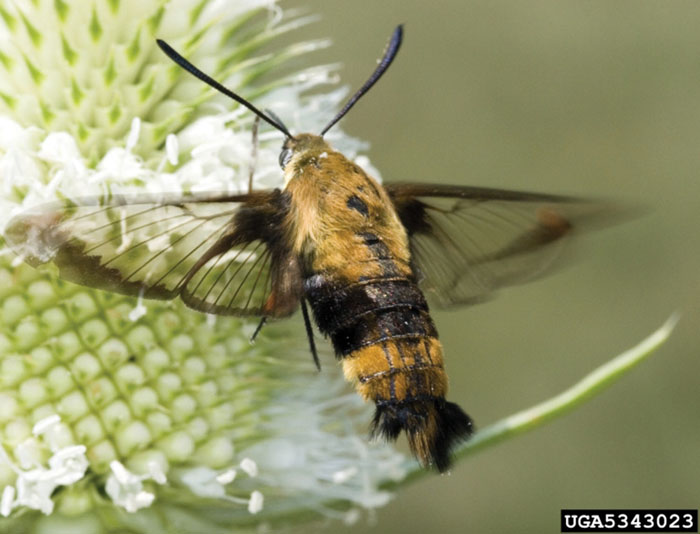Late summer brings new questions in the garden
Published 12:00 am Friday, August 3, 2018

- University of Georgia The clear-winged moth somtimes looks like a hummingbird, or sometimes like a large bee.
Late summer months are the ones when weeds, insects and other pests seem to flourish in our landscapes, especially with the deluge of rainfall over the past few weeks. Below are a few questions posed over the past few days.
Question: We have some type of grass growing in our flower beds that grows even more when we pull it up. Can you identify this grass and steps on controlling this weed?
Answer: You have yellow nutsedge. Yellow nutsedge is a very difficult weed to control. Most think of the weed as a type of grass, but it’s actually classified as sedge. The blades are triangular shaped and grow very rapidly, especially in hot, humid weather that we’ve experienced over the past few weeks. Unfortunately yellow nutsedge forms tubers (nuts) at the tips of the rhizomes. During the growing season, plants spread by rhizomes or underground stems, producing “daughter plants.” Yellow nutsedge begins forming tubers at the tips of the rhizomes, maturing in late July to mid-August. Spot spraying with a systemic herbicide such as glyphosate (Roundup) will control the newly emerged nutsedge, however, the sprouts below ground generally continue to emerge and continue to be a problem. Many landscape maintenance professionals prefer to use a post emergence herbicide with the active ingredient Halosulfuron-methyl to control the weed. It’s often sold as Sedgehammer or other trade names in local garden shops and retail outlets. Go to http://www.clemson.edu/extension/hgic/pests/weeds/hgic2312.html for more detailed information about the yellow and other sedges.
Question: My okra is growing very well, and the leaves are dark green and healthy but I don’t seem to have much of a crop. What is causing this problem?
Answer: Over fertilization, especially with nitrogen fertilizers, which will cause fruit to drop before maturity. Adding high phosphorus fertilizer will help increase the bloom set. Okra must have full sun to bloom very well — at least 6 to 8 hours of full sun.
Question: My tomatoes are splitting and cracking open at the top. What causes this?
Answer: The cracking is common with excessive rainfall as we’ve experienced, along with the heat of the summer. Some of the commercial tomato varieties are resistant, but all will crack under unusually wet weather. Cracking may also occur when the fruit is allowed to fully ripen on the vine.
Question: I was looking in my impatiens this week and noticed an unusual bee on my flowers. At first, I thought it was a big bee, and then I thought it was a hummingbird. However, I noticed it had long antennae. So, what is this insect?
Answer: You have spotted a clear winged hummingbird moth. Some have vivid colors while others look very much like large bumble bees in the flowers. They do not sting.


